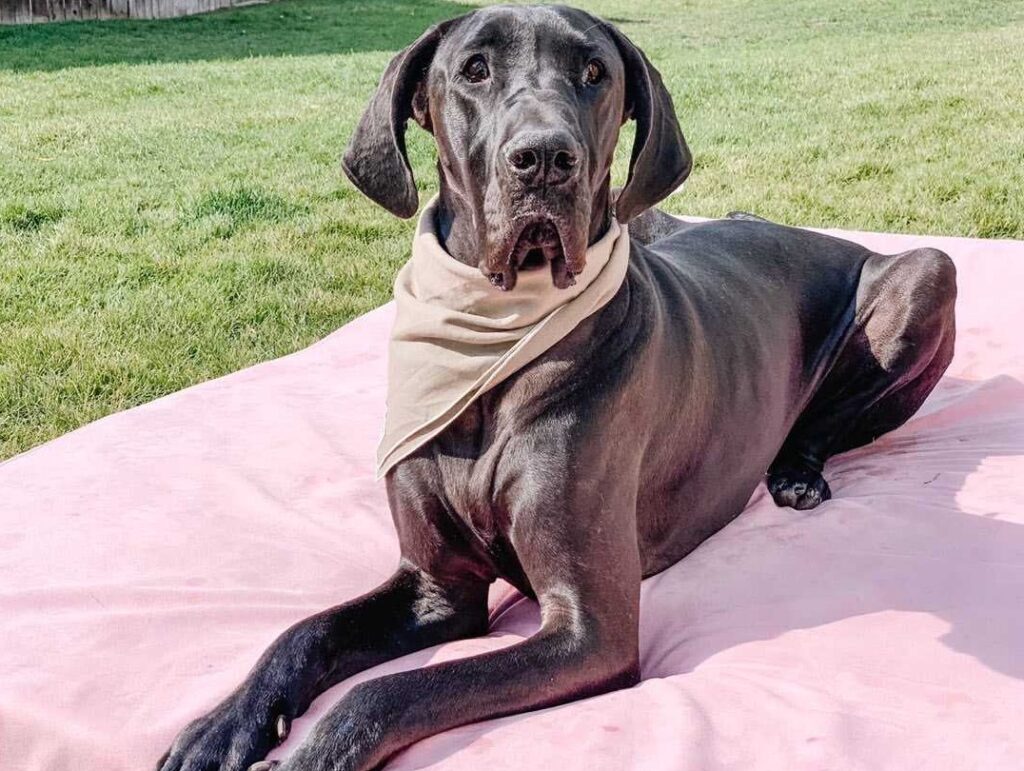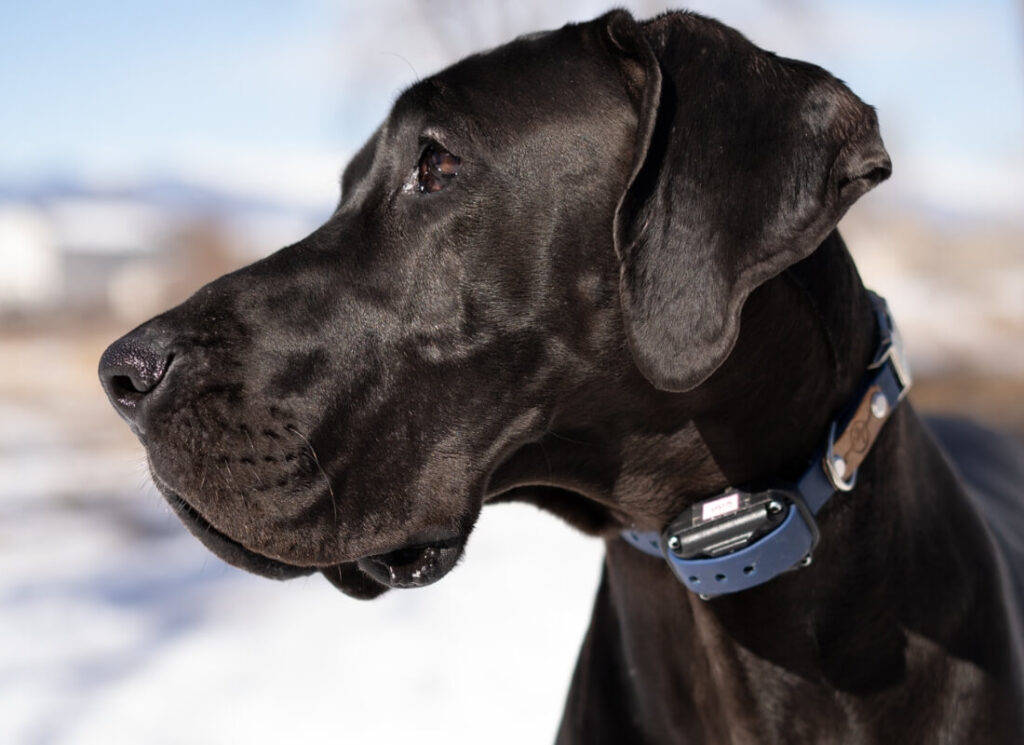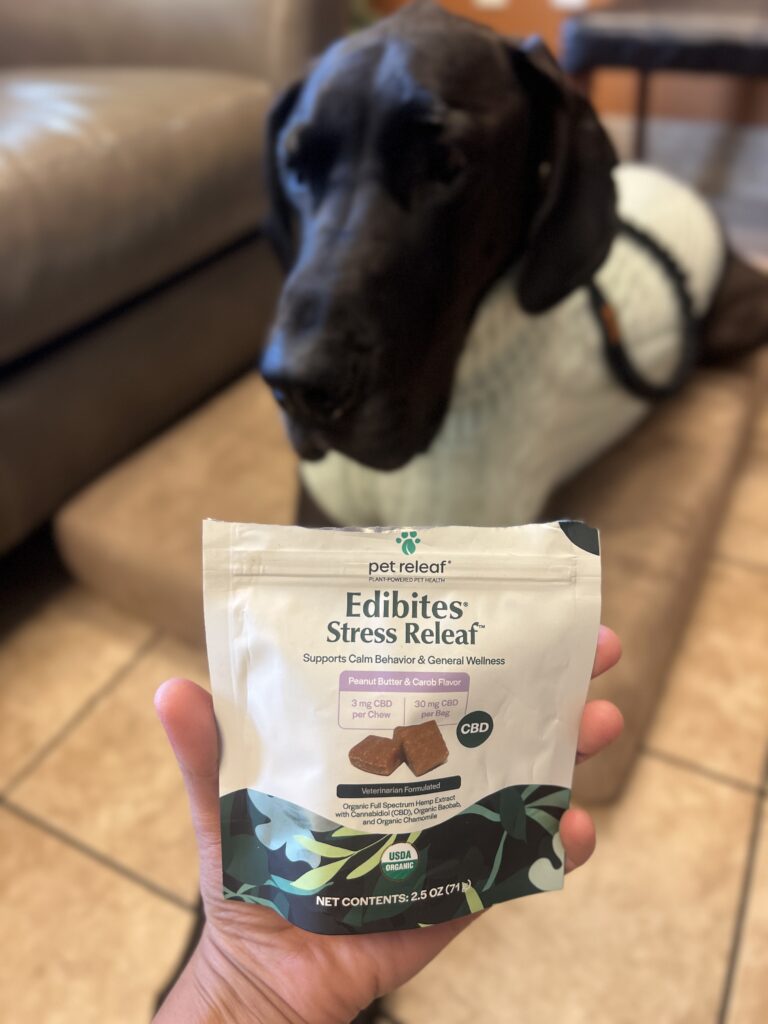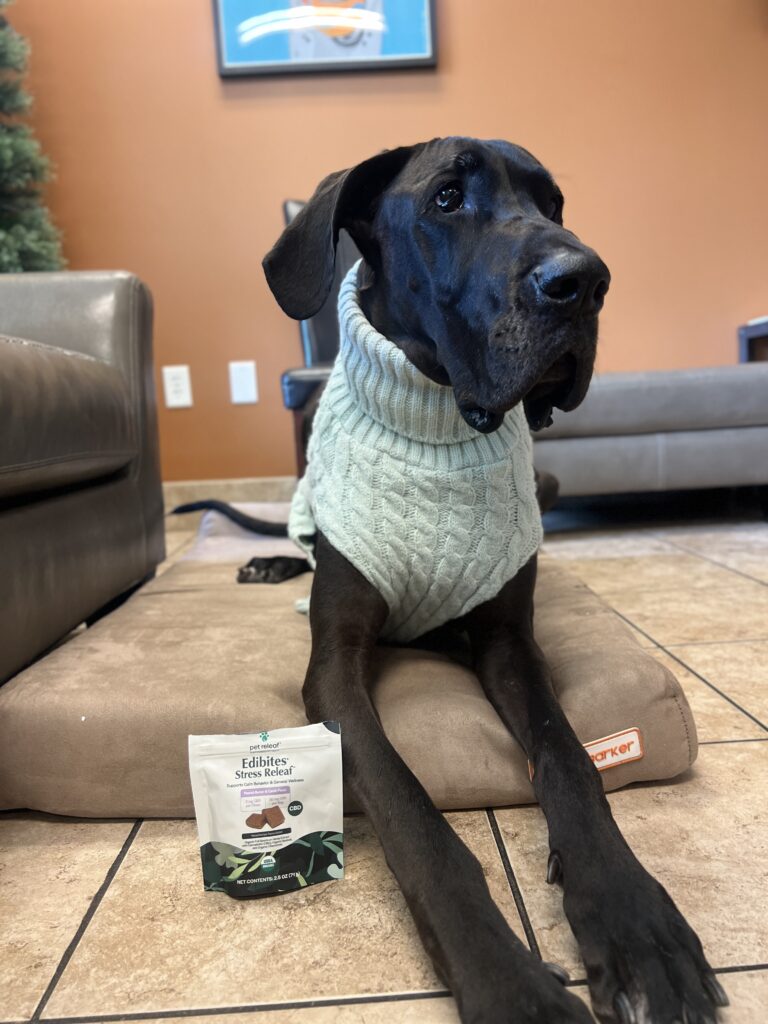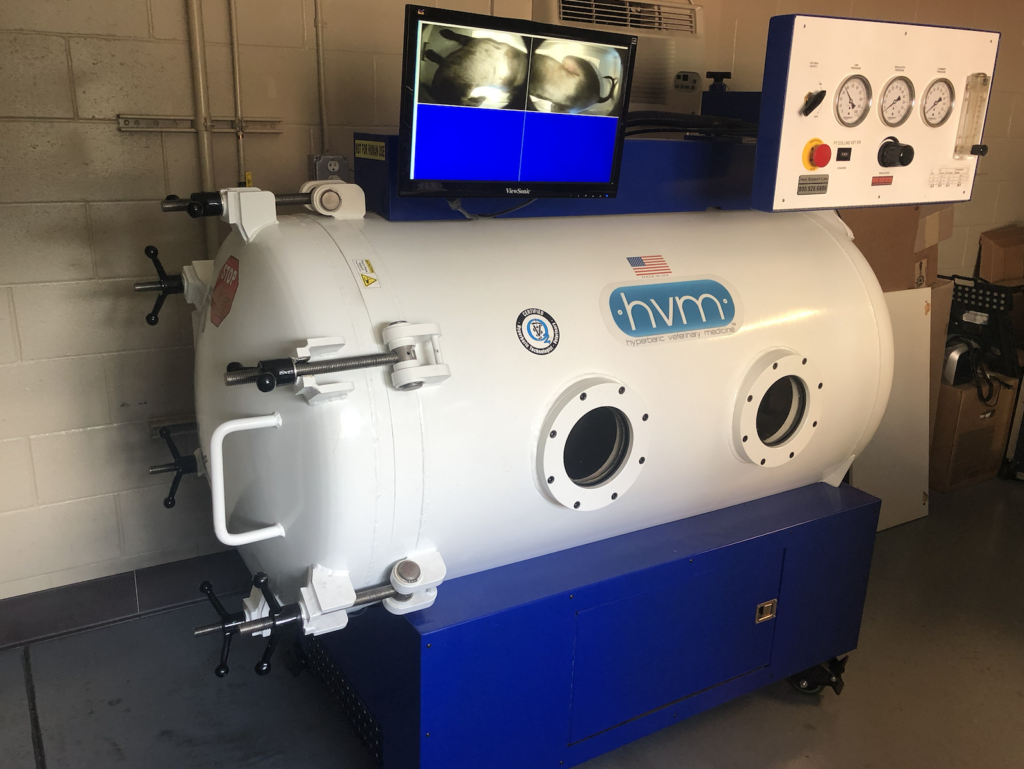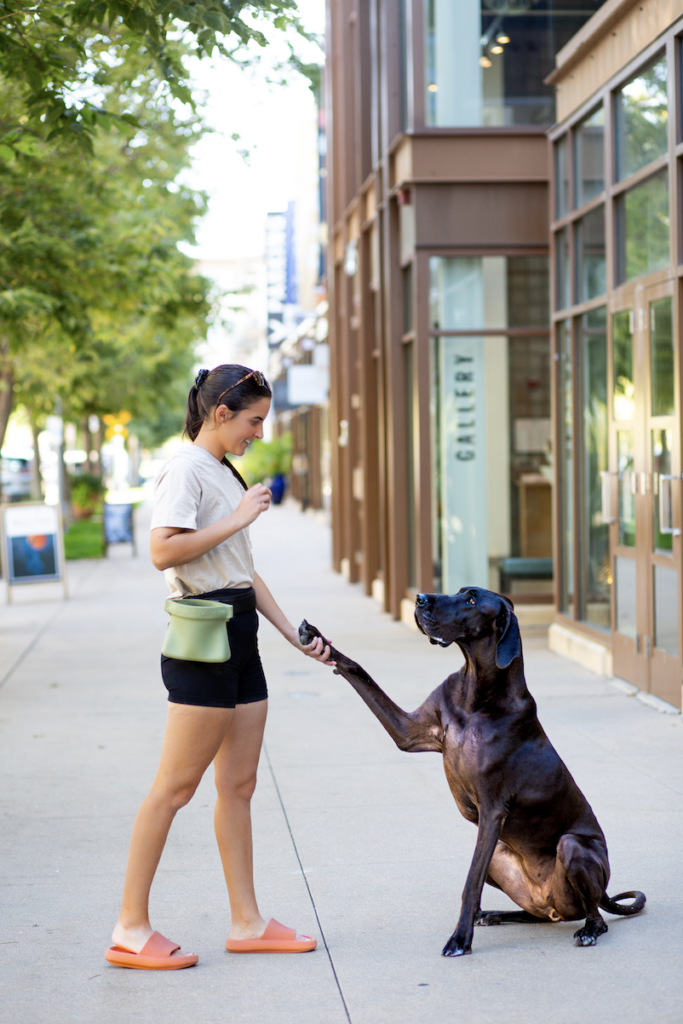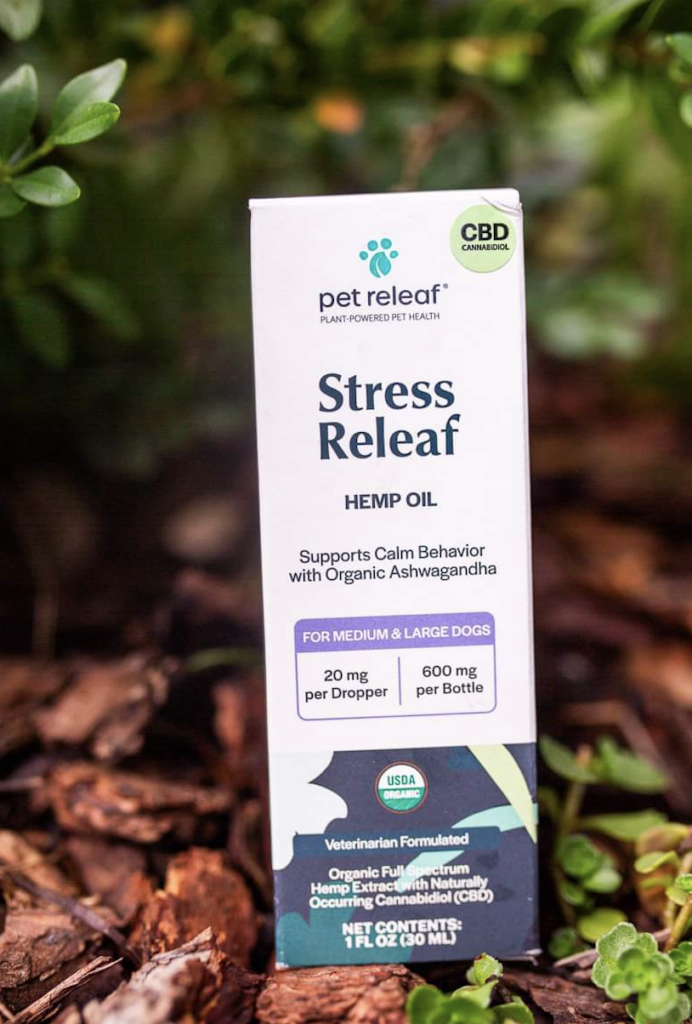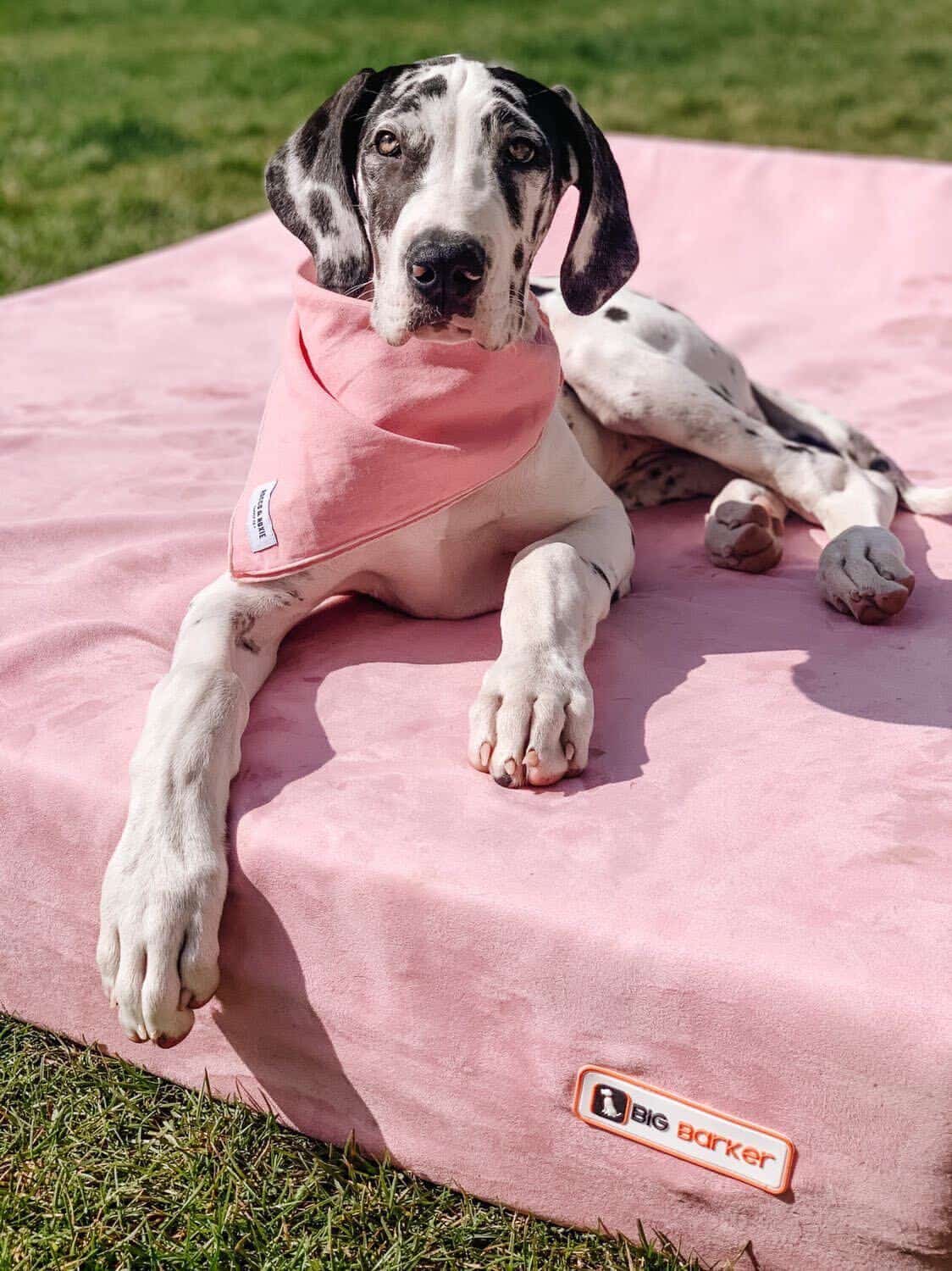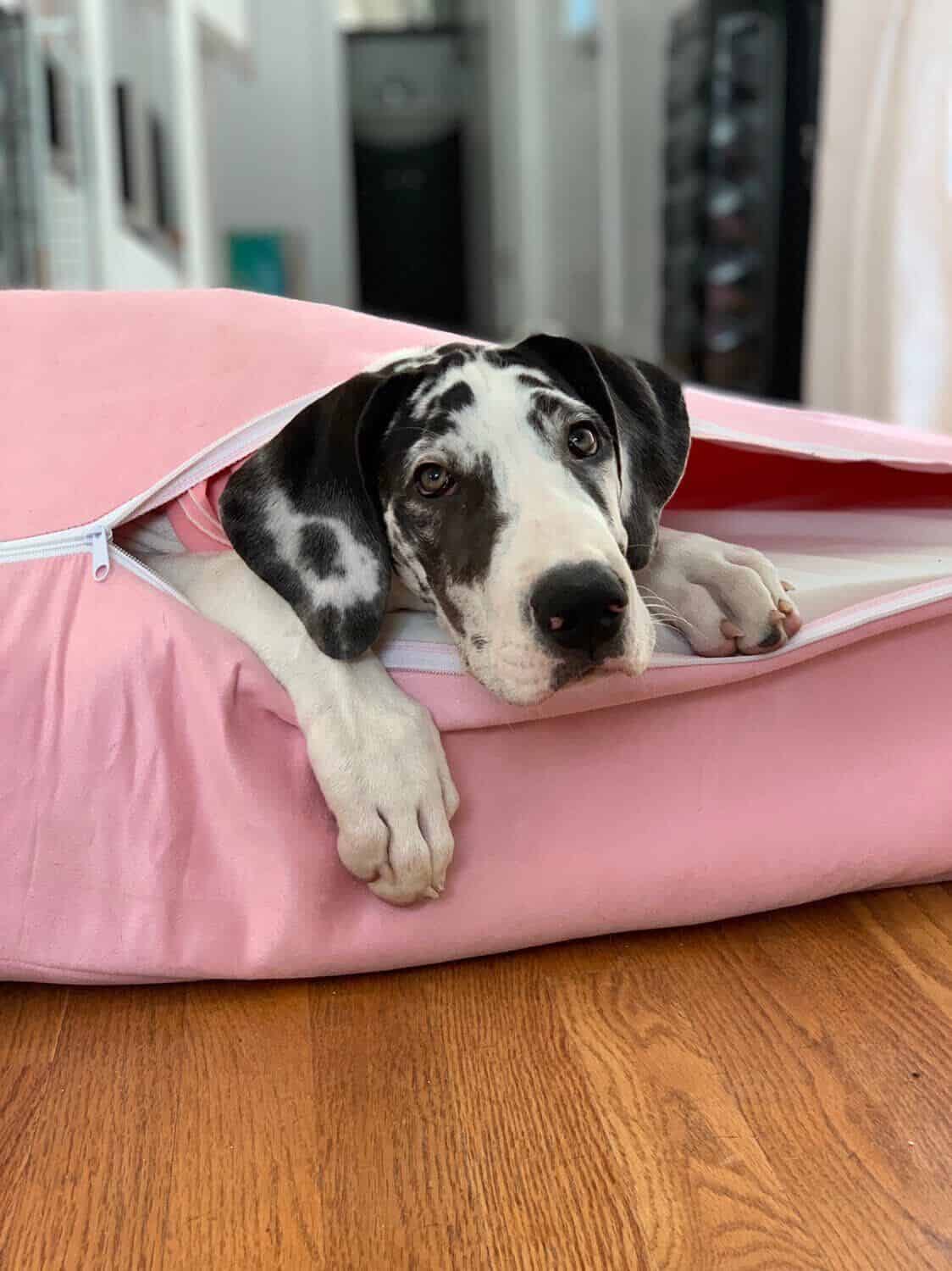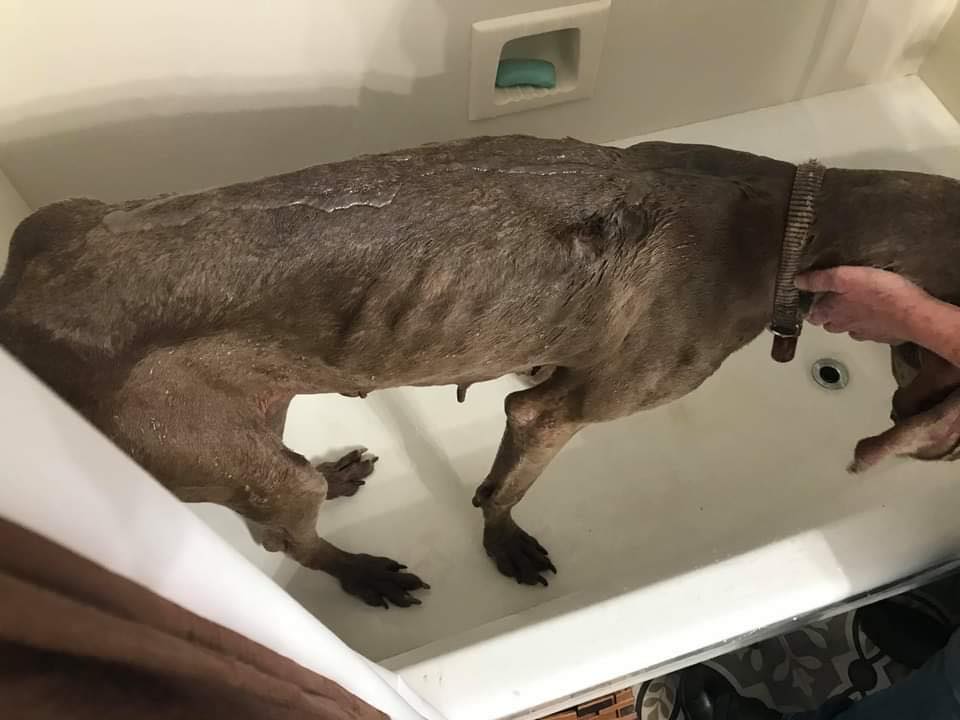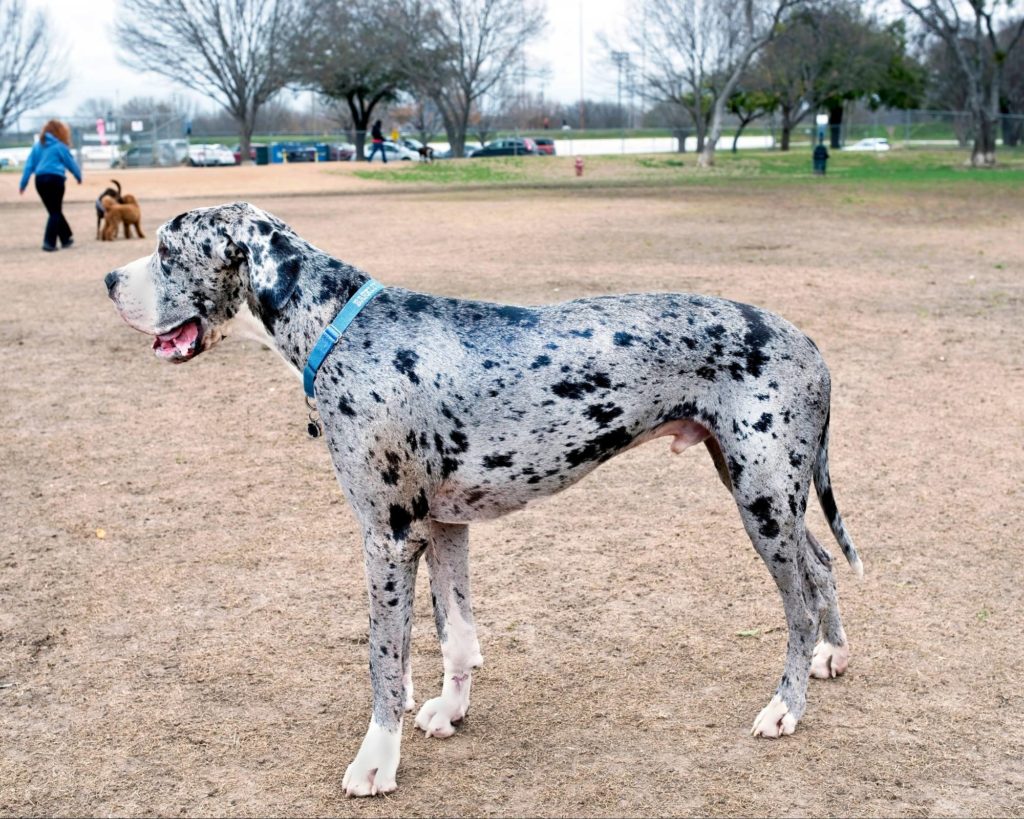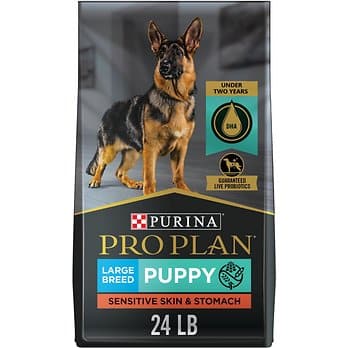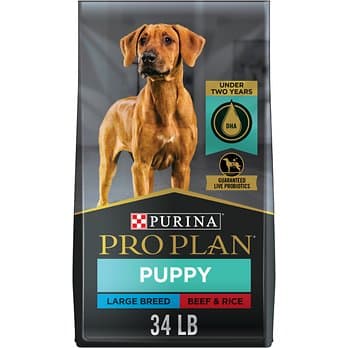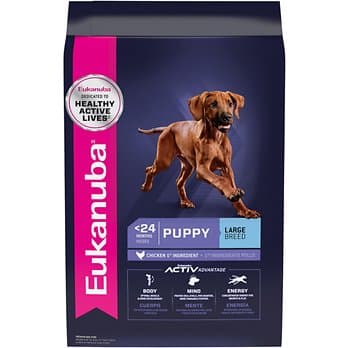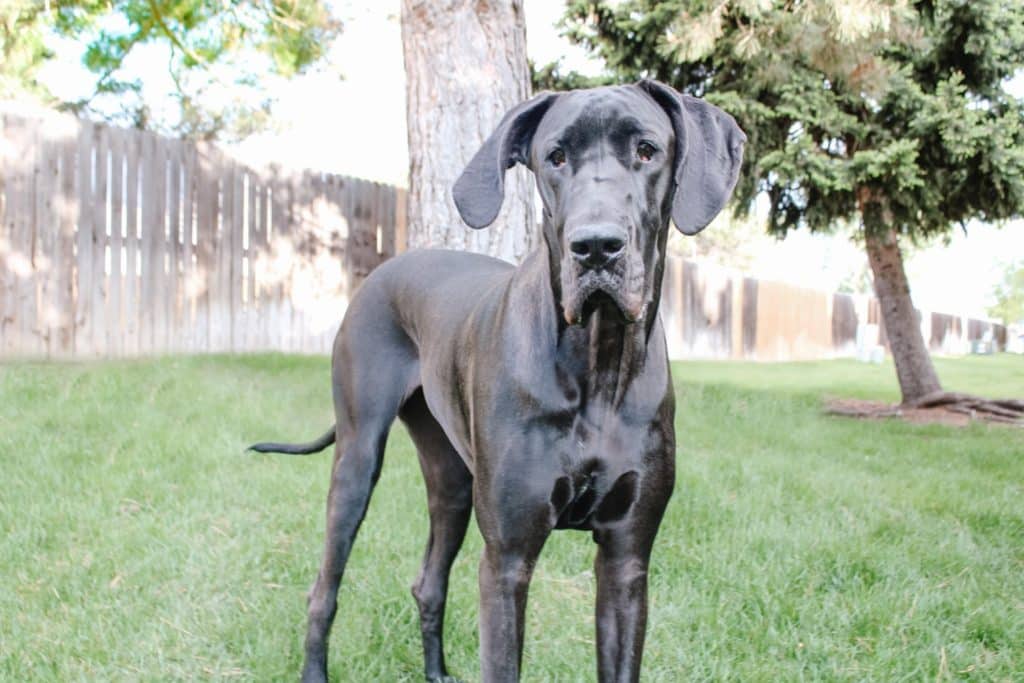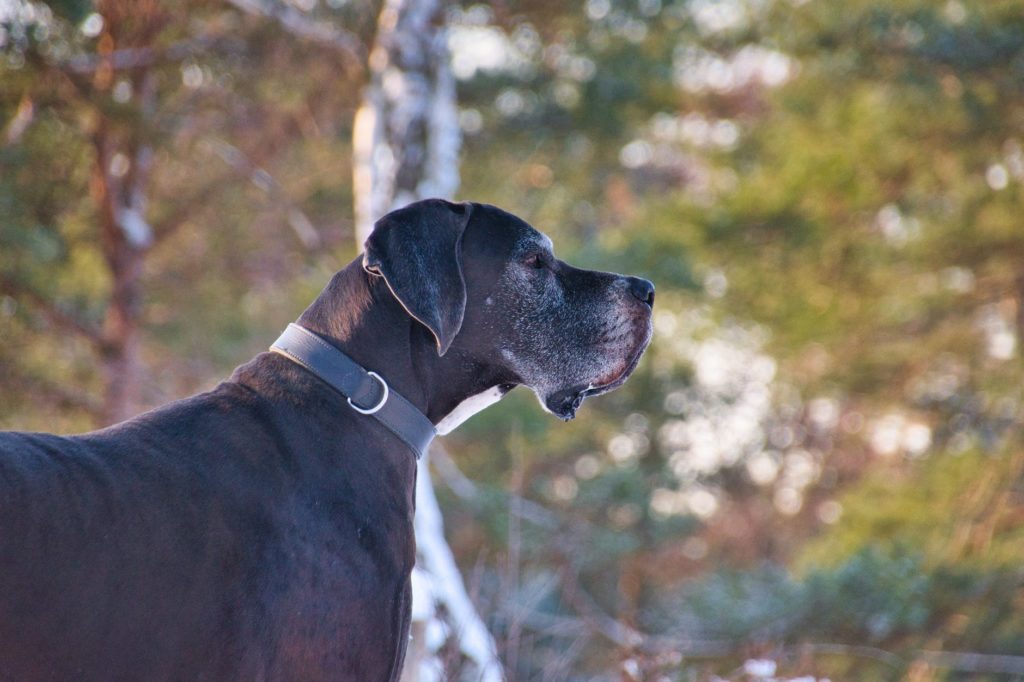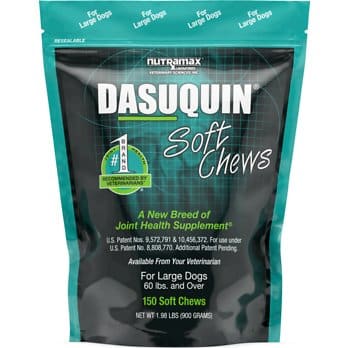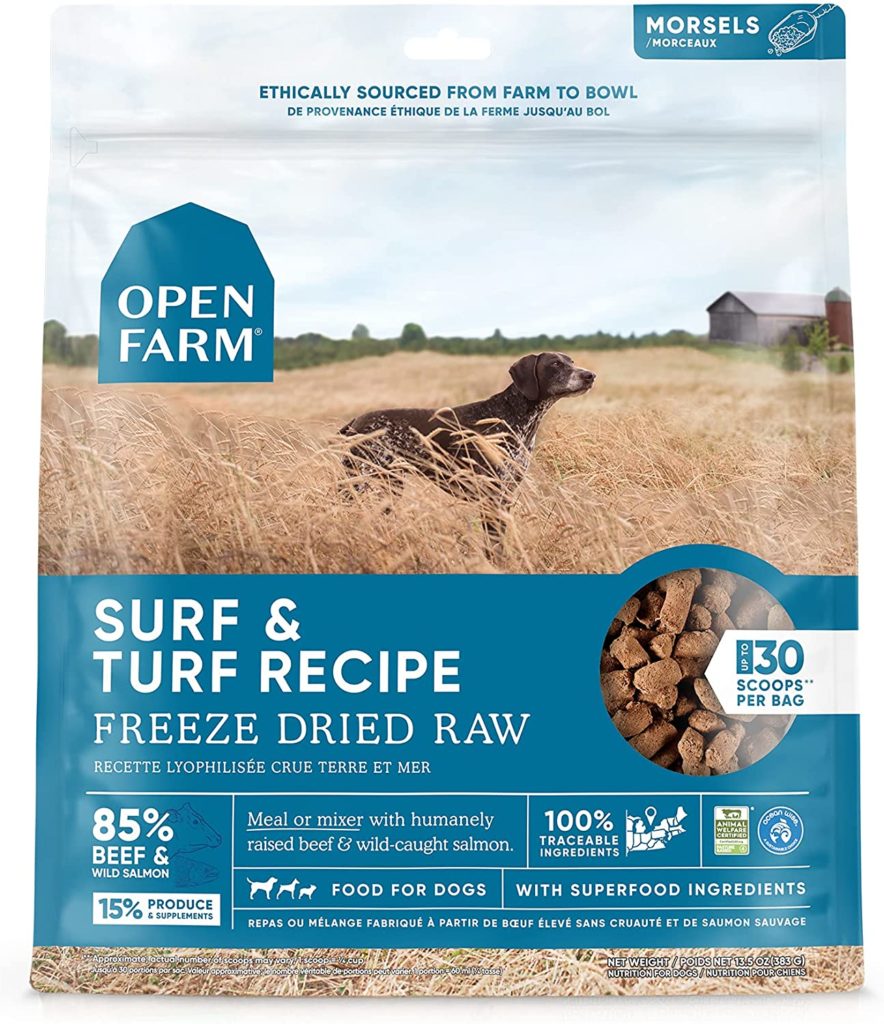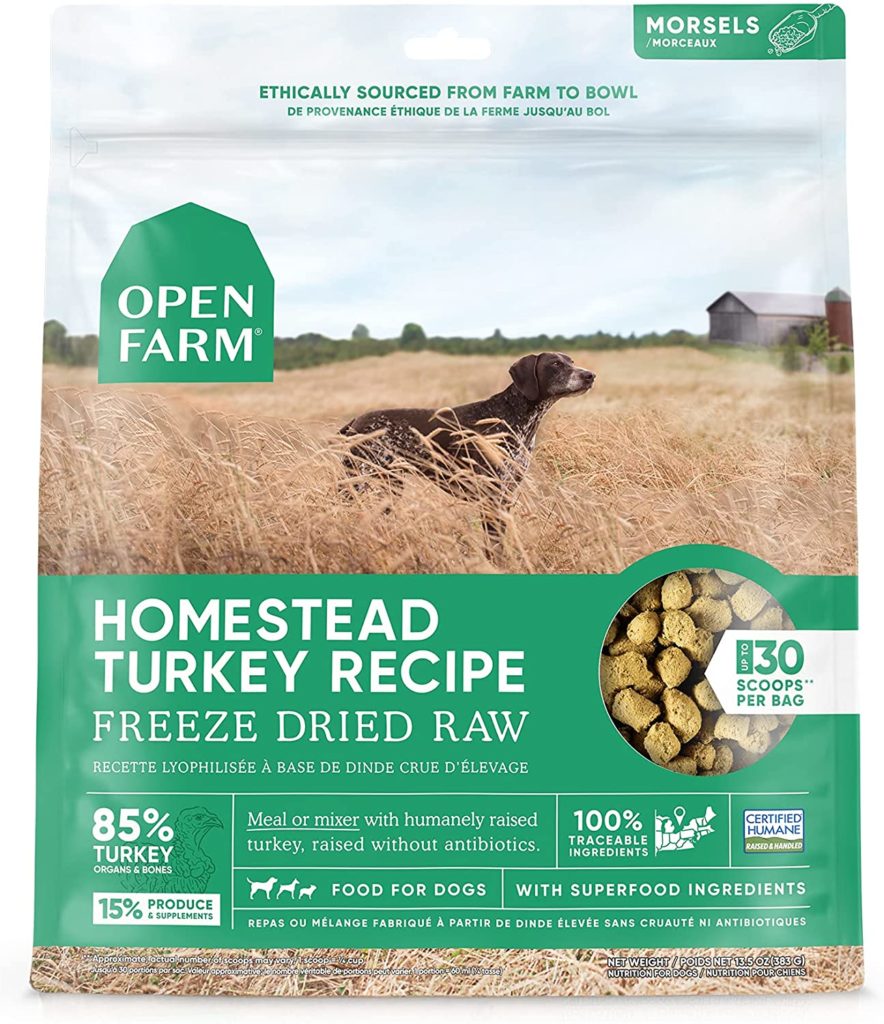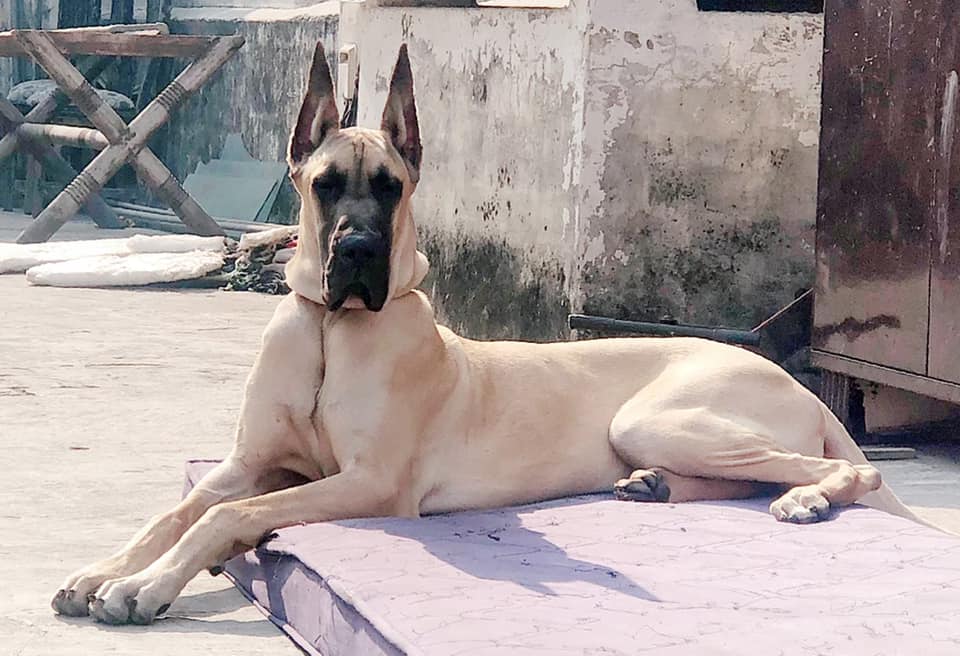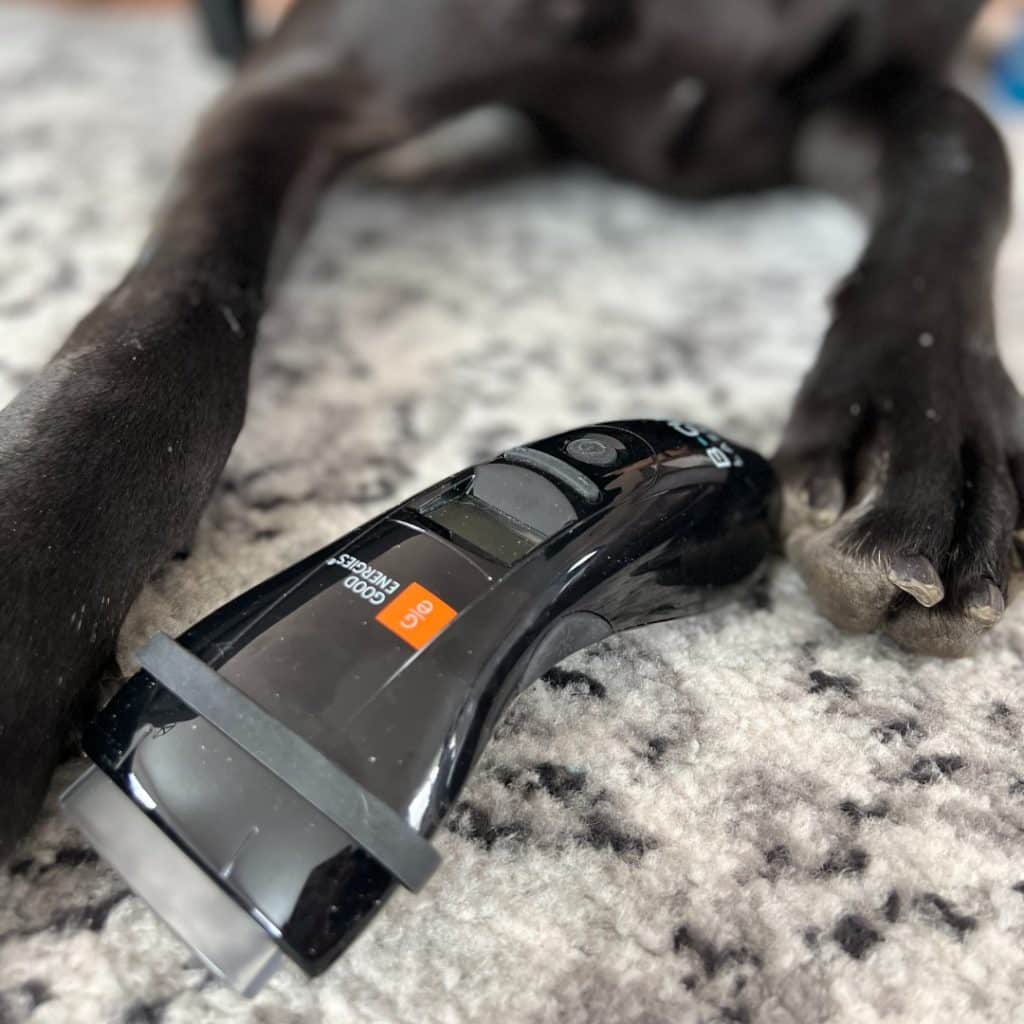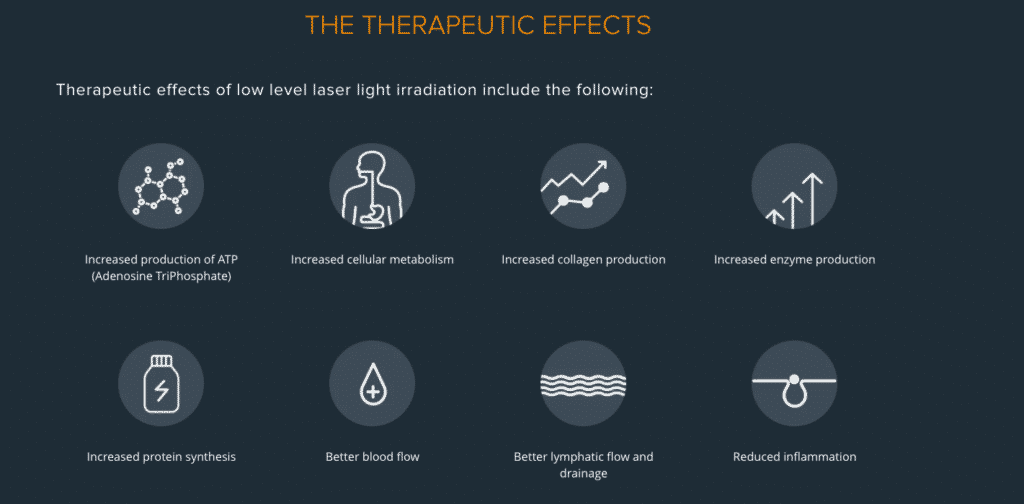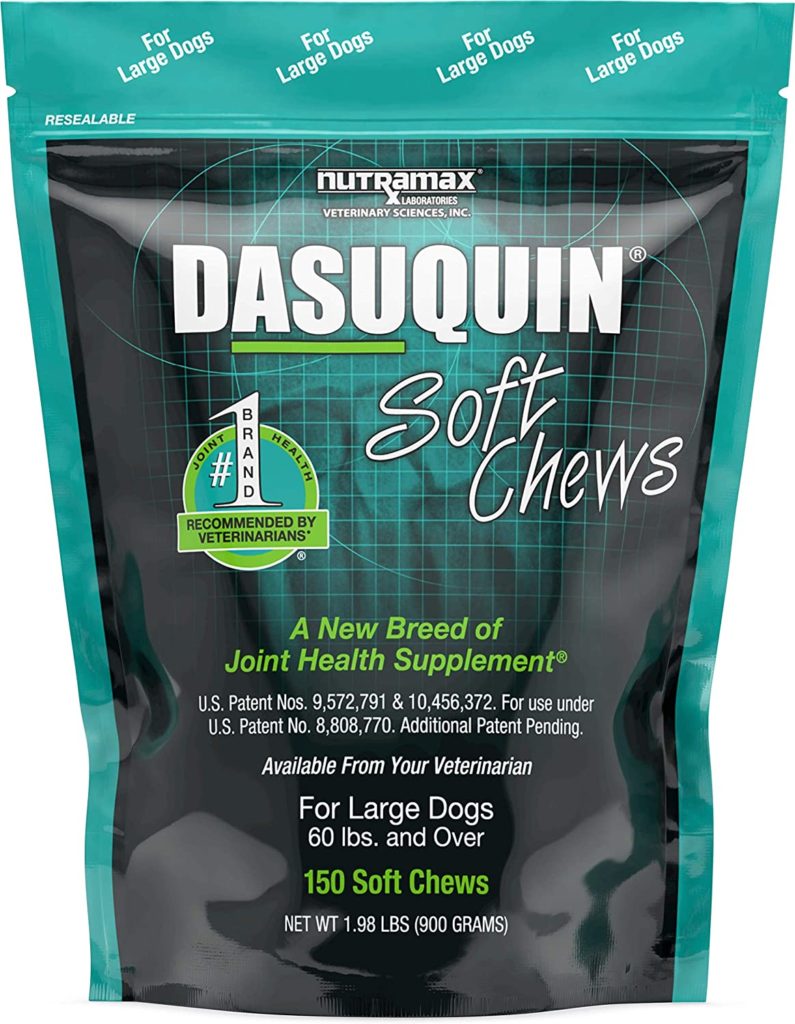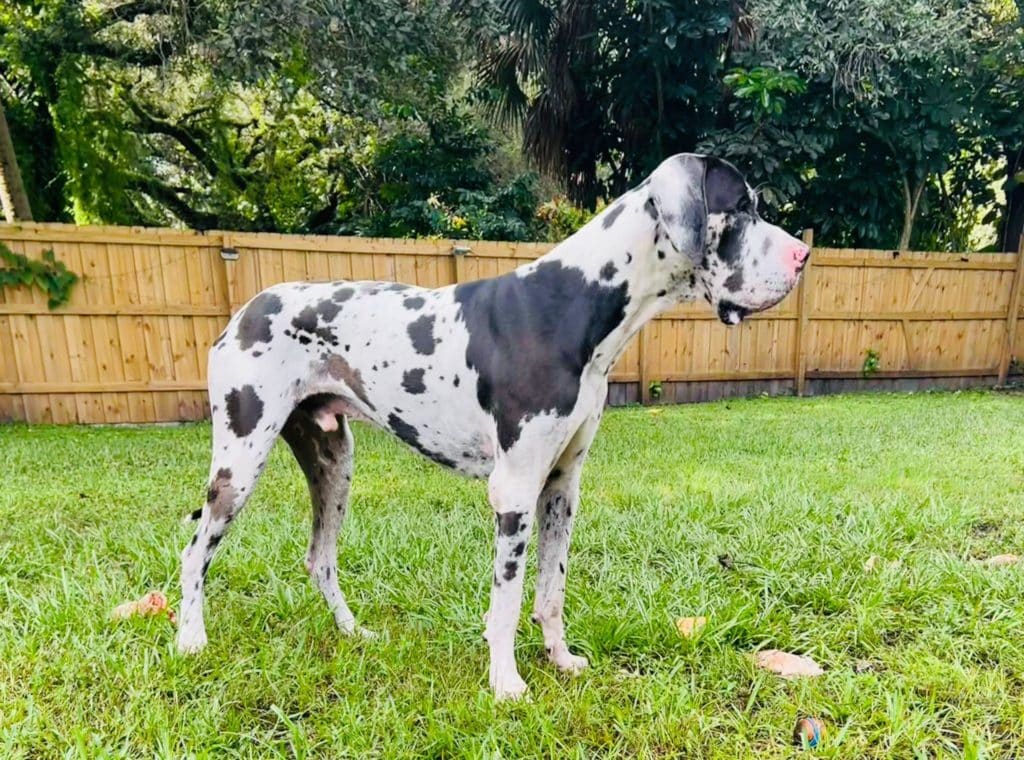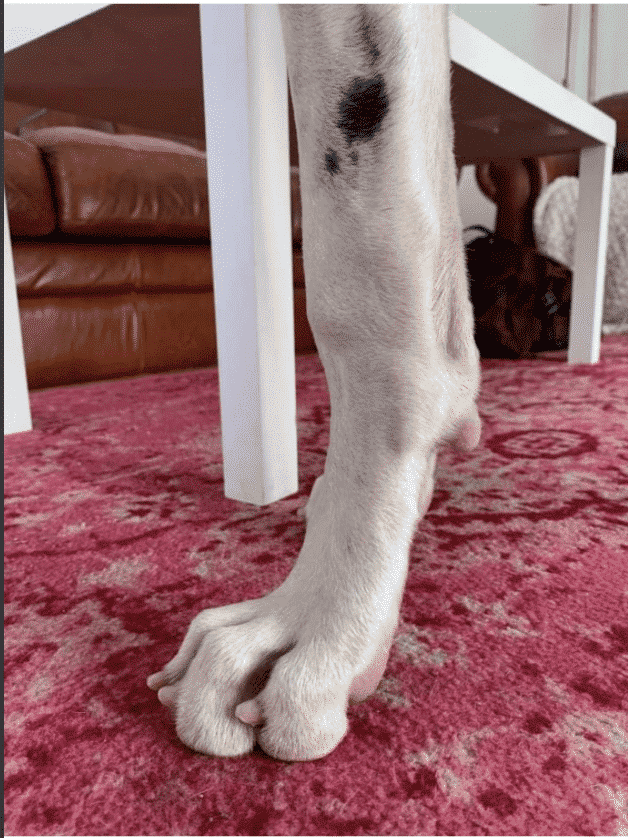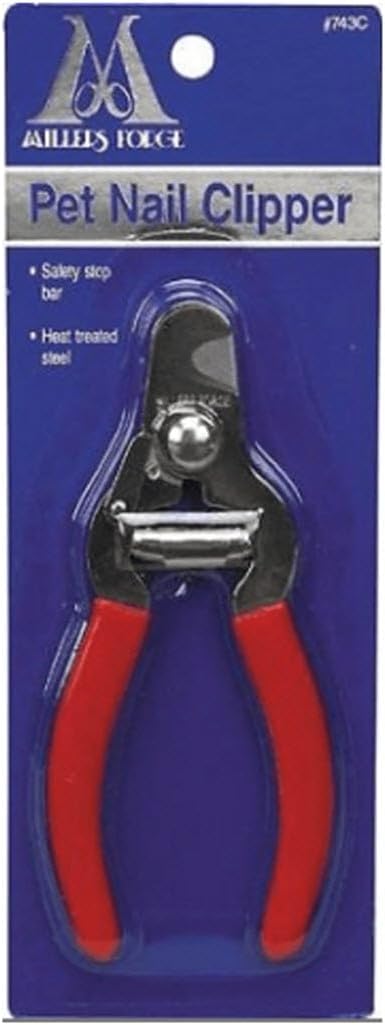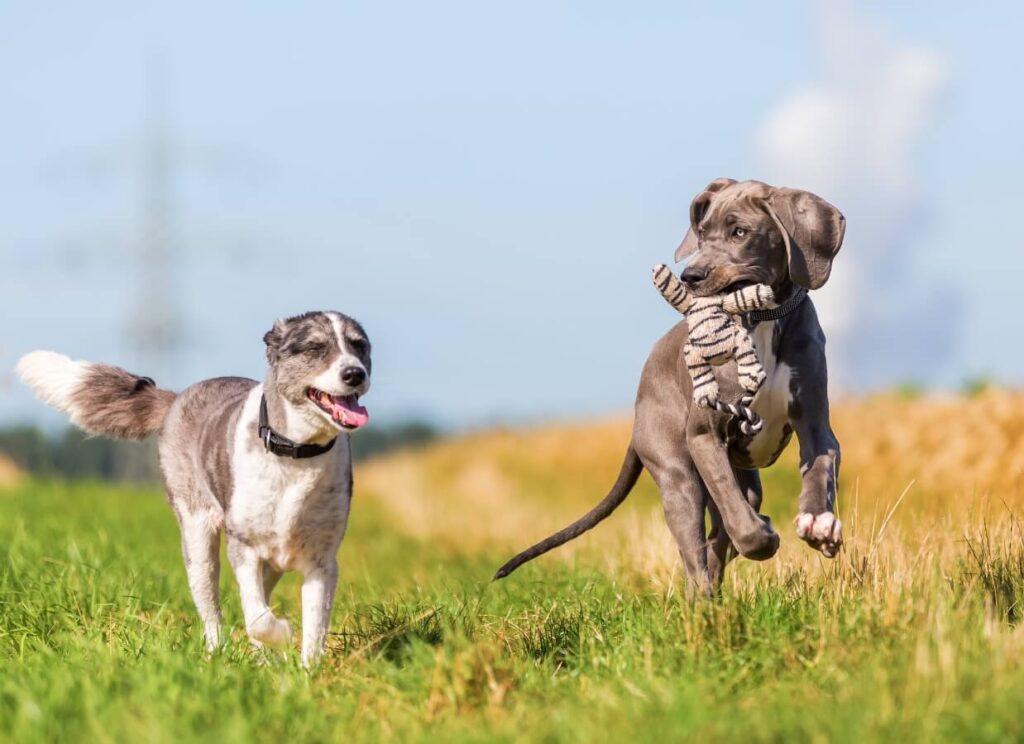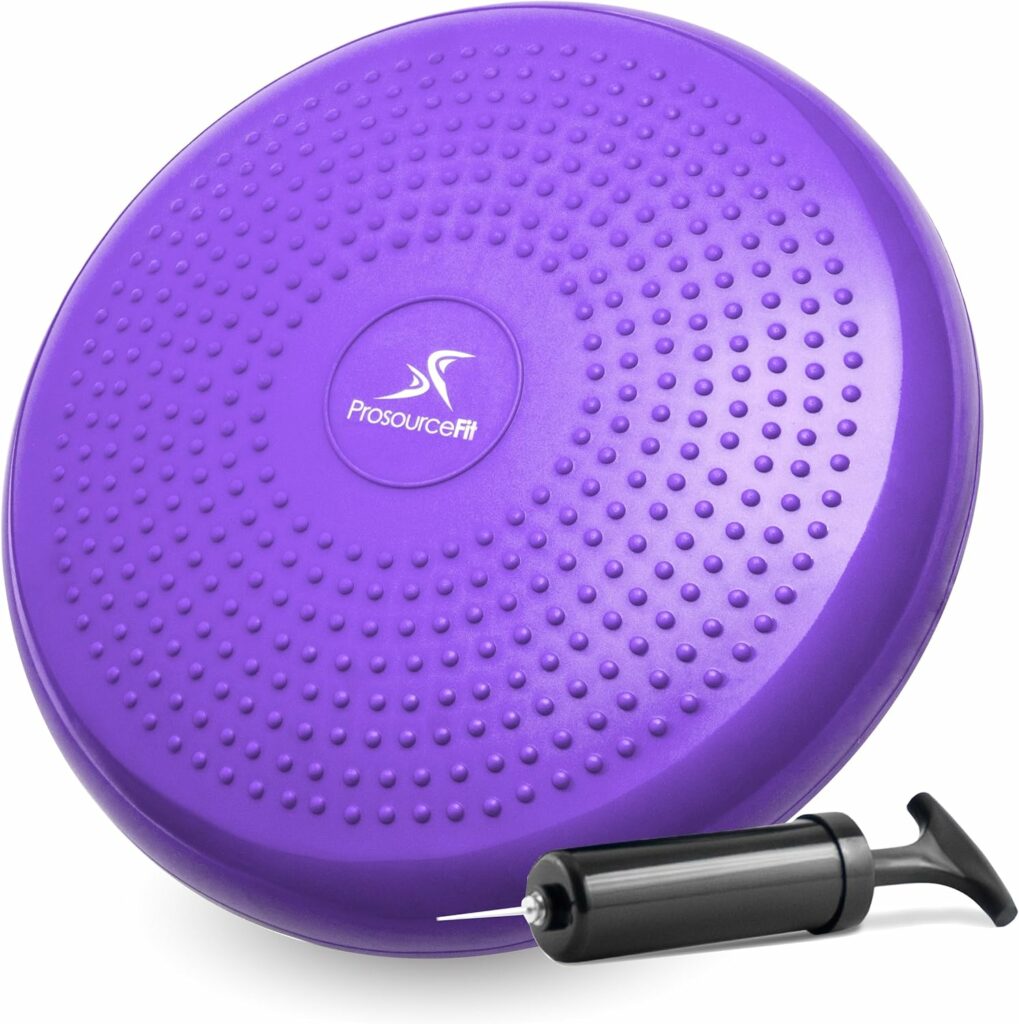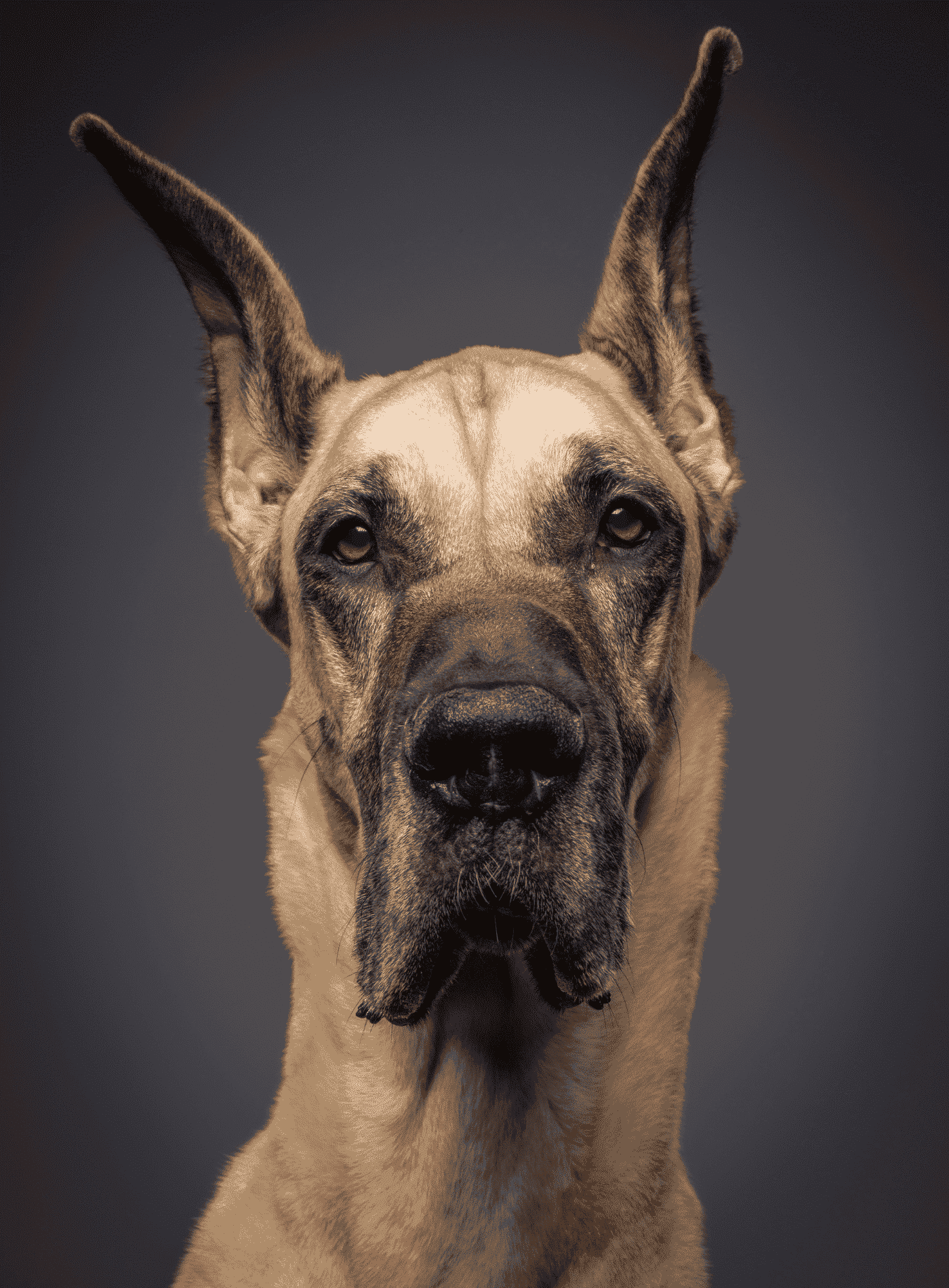Hip dysplasia is a common orthopedic condition that affects dogs of various breeds and sizes. It occurs when the hip joint develops abnormally, leading to discomfort, pain, and mobility issues. While hip dysplasia is often associated with older dogs, it can also affect puppies. Understanding the signs and symptoms of hip dysplasia in dogs and puppies is crucial for early detection and management.
This blog post will cover:
- Signs of Hip Dysplasia in Dogs
- Puppy’s that sit funny (and what it means)
- How to prevent hip dysplasia in puppies
- Puppy nutrition & growth disorders
- Hip dysplasia diagnosis
- Treating dogs with hip dysplasia

Signs of Hip Dysplasia in Puppies and Dogs
Here are some key indicators to watch for:
- Difficulty Rising: Puppies and dogs with hip dysplasia may struggle to get up from a lying or sitting position. You might notice them hesitating or using their front legs to push themselves up.
- Lameness or Limping: A noticeable limp, especially in the hind legs, can be a sign of hip dysplasia. Dogs may favor one leg over the other or exhibit an uneven gait while walking or running.
- Decreased Activity Levels: If your puppy or dog is less active than usual, it could indicate discomfort or pain associated with hip dysplasia. They may be reluctant to participate in activities they once enjoyed, such as playing fetch or going for walks.
- Stiffness or Pain: Dogs with hip dysplasia may exhibit stiffness, particularly after periods of rest or physical activity. They may also show signs of pain when touched around the hip area or when attempting certain movements.
- Audible Clicking or Popping Sounds: Some dogs with hip dysplasia may produce clicking or popping sounds when they move their hips. These noises can indicate joint instability and should be evaluated by a veterinarian.
- Loss of Muscle Mass: As hip dysplasia progresses, affected muscles may become weaker or atrophied, particularly in the hindquarters. This loss of muscle mass can contribute to further mobility issues and difficulty supporting the body’s weight.
- Difficulty Climbing Stairs or Jumping: Activities that require the use of the hind legs, such as climbing stairs or jumping onto furniture, can be challenging for dogs with hip dysplasia. They may hesitate or exhibit reluctance to perform these movements.
If you notice any of these signs or symptoms in your puppy or dog, it’s essential to consult with your veterinarian promptly. Early detection and intervention can help manage hip dysplasia and improve your pet’s quality of life.

How is Hip Dysplasia Diagnosed in Dogs?
Diagnosing hip dysplasia in dogs typically involves a combination of physical examination, medical history review, and diagnostic imaging. Here’s an overview of the steps involved in diagnosing hip dysplasia:
- Physical Examination: During a physical exam, the veterinarian will observe your dog’s gait, posture, and range of motion in the hips and hind legs. They may also palpate the hip joints to check for pain, stiffness, or abnormalities.
- Medical History Review: Providing a detailed medical history, including any signs or symptoms you’ve noticed in your dog, can help the veterinarian assess the likelihood of hip dysplasia. Information about your dog’s breed, age, and activity level is also relevant.
- Diagnostic Imaging: X-rays (radiographs) are the primary diagnostic tool used to evaluate hip dysplasia in dogs. Sedation or anesthesia may be necessary to obtain clear images, especially in uncooperative or anxious patients. X-rays allow veterinarians to assess the shape of the hip joints, the degree of joint laxity (looseness), and the presence of any arthritic changes.
- Additional Tests: In some cases, additional diagnostic tests such as CT scans or MRI may be recommended to provide a more detailed assessment of the hip joint structures. These advanced imaging techniques can be particularly useful for evaluating soft tissue abnormalities and detecting early signs of hip dysplasia.
- Orthopedic Evaluation: Depending on the severity of the hip dysplasia and the presence of other orthopedic issues, the veterinarian may perform additional orthopedic tests to assess joint stability, muscle strength, and overall function.
Once hip dysplasia is diagnosed, the veterinarian will discuss treatment options tailored to your dog’s specific needs. Treatment may include a combination of medical management, weight management, physical therapy, and surgical intervention, depending on the severity of the condition and the dog’s circumstances.
Regular follow-up examinations and monitoring are essential to track the progression of hip dysplasia and adjust treatment plans as needed. With early diagnosis and appropriate management, dogs with hip dysplasia can lead active and comfortable lives.

How is Hip Dysplasia Treated in Dogs?
The treatment approach for hip dysplasia in dogs depends on various factors, including the severity of the condition, the dog’s age, overall health, and lifestyle. Here’s an overview of common treatment options for hip dysplasia:
- Weight Management: Maintaining a healthy weight is crucial for dogs with hip dysplasia. Excess weight places additional strain on the hip joints and can exacerbate symptoms. Your veterinarian may recommend a balanced diet and exercise plan tailored to your dog’s needs to help achieve and maintain an optimal body condition.
- Medications: Non-steroidal anti-inflammatory drugs (NSAIDs) may be prescribed to alleviate pain and inflammation associated with hip dysplasia. These medications can help improve comfort and mobility, allowing affected dogs to lead more active lives. It’s essential to follow your veterinarian’s dosage instructions and monitor for any potential side effects.
- Joint Supplements: Glucosamine, chondroitin sulfate, and omega-3 fatty acids are commonly used as joint supplements to support joint health and reduce cartilage degeneration. While these supplements may not reverse existing hip dysplasia, they can help slow the progression of arthritis and improve joint function over time.
- Physical Therapy: Rehabilitation exercises, such as swimming, hydrotherapy, and therapeutic stretching, can help strengthen the muscles surrounding the hip joints and improve the range of motion. Physical therapy can also alleviate pain, reduce stiffness, and enhance overall mobility in dogs with hip dysplasia.
- Lifestyle Modifications: Making adjustments to your dog’s environment and daily routine can help minimize stress on the hips. Providing supportive bedding, using ramps or stairs to avoid jumping, and limiting high-impact activities can help manage hip dysplasia symptoms and prevent further joint damage.
- Surgical Intervention: In severe cases of hip dysplasia or when conservative management fails to provide adequate relief, surgical options may be considered. Common surgical procedures for hip dysplasia include:
- Total Hip Replacement (THR): This procedure involves replacing the entire hip joint with a prosthetic implant, providing pain relief and restoring normal joint function.
- Femoral Head Ostectomy (FHO): In FHO surgery, the femoral head (the “ball” of the hip joint) is removed, allowing the surrounding muscles to support the hip joint and reduce pain.
- Triple Pelvic Osteotomy (TPO): TPO surgery involves altering the shape of the pelvis to improve hip joint stability and reduce the risk of arthritis.
Regular veterinary examinations and monitoring are essential for dogs undergoing treatment for hip dysplasia. Your veterinarian will assess your dog’s progress, adjust treatment as needed, and provide guidance on managing long-term joint health.
By combining appropriate treatment modalities and lifestyle modifications, pet owners can effectively manage hip dysplasia and improve their dog’s quality of life. Working closely with your veterinarian and following their recommendations can help optimize outcomes for dogs with this common orthopedic condition.

Does Pet Insurance Cover Hip Dysplasia?
Whether pet insurance covers hip dysplasia depends on the specific policy and insurance provider. Some pet insurance companies offer coverage for hip dysplasia as part of their standard plans, while others may offer it as an optional add-on or require the purchase of a higher-tier plan with broader coverage.
Here are some key points to consider regarding pet insurance coverage for hip dysplasia:
- Pre-Existing Conditions: Most pet insurance policies do not cover pre-existing conditions, including hip dysplasia that was diagnosed before the policy’s effective date or during the waiting period. It’s essential to review the policy terms and exclusions carefully to understand what is and isn’t covered.
- Breed-Specific Considerations: Some insurance providers may impose breed-specific restrictions or limitations on coverage for conditions like hip dysplasia. Certain breeds are more prone to developing hip dysplasia, so insurers may adjust premiums or coverage options accordingly.
- Coverage Limits and Waiting Periods: Pet insurance policies typically have annual coverage limits, deductibles, and waiting periods before coverage for specific conditions, including hip dysplasia, becomes effective. Be sure to review these details when selecting a policy to ensure it meets your pet’s needs.
- Optional Coverage Add-Ons: Some pet insurance companies offer optional wellness plans or riders that cover preventive care, including hip dysplasia screening and diagnostic testing. Adding these options to your policy may provide additional coverage for managing your dog’s orthopedic health.
- Policy Renewals and Changes: Insurance providers may adjust coverage terms, premiums, or exclusions at policy renewal. It’s essential to stay informed about any changes to your policy and consider how they may impact coverage for hip dysplasia and other conditions.
Before purchasing pet insurance, carefully research different providers, compare coverage options and exclusions and consider factors such as cost, coverage limits, and customer reviews. Discussing your specific concerns, including hip dysplasia coverage, with insurance representatives can help you make an informed decision about the best policy for your pet’s needs.

What Causes Dogs to Get Hip Dysplasia?
Hip dysplasia in dogs is a multifactorial condition with both genetic and environmental influences. While the exact cause of hip dysplasia is not fully understood, several factors contribute to its development:
- Genetics: Genetics plays a significant role in the development of hip dysplasia. It is believed to be a polygenic trait, meaning it involves multiple genes, each with a small effect on susceptibility. Dogs with a family history of hip dysplasia are at a higher risk of inheriting the condition. When choosing a breeder for your puppy, verify that both parents have been OFA Hip Tested.
- Breed Predisposition: Certain dog breeds are more prone to hip dysplasia than others. Large and giant breeds, such as Labrador Retrievers, Golden Retrievers, German Shepherds, and Great Danes, are among the most commonly affected. This suggests a genetic predisposition to the condition within these breeds.
- Developmental Factors: Hip dysplasia primarily affects growing puppies and young dogs, as the abnormal development of the hip joint occurs during the early stages of skeletal growth. Factors such as rapid growth rate, excessive weight gain, improper nutrition, and inappropriate exercise during the puppyhood stages can contribute to the development and progression of hip dysplasia. I’ll cover nutritional factors below!
- Joint laxity: In dogs with hip dysplasia, the hip joint may exhibit excessive laxity or looseness, allowing abnormal movement and instability. This laxity can lead to increased wear and tear on the joint surfaces, cartilage damage, and inflammation, ultimately contributing to the development of hip dysplasia and secondary osteoarthritis.
- Environmental Factors: Environmental factors, including diet, exercise, and management practices, can influence the development and progression of hip dysplasia. Providing appropriate nutrition, maintaining a healthy body weight, and avoiding excessive or high-impact exercise during the critical growth phases can help mitigate the risk of hip dysplasia in susceptible dogs.
- Other Factors: Hormonal influences, such as estrogen and testosterone levels, may also affect the development of hip dysplasia. Additionally, factors such as trauma, joint infections, and inflammatory conditions can contribute to the progression of hip dysplasia or exacerbate existing symptoms.
While hip dysplasia is influenced by a combination of genetic and environmental factors, responsible breeding practices and proactive management strategies can help reduce the prevalence and severity of the condition in susceptible dog breeds. Early detection, appropriate veterinary care, and lifestyle modifications are essential for managing hip dysplasia and improving affected dogs’ quality of life.

How to Prevent Hip Dysplasia in Puppies
Preventing hip dysplasia in puppies involves a combination of responsible breeding practices, proper nutrition, appropriate exercise, and proactive management strategies. While it may not be possible to eliminate the risk of hip dysplasia, these measures can help reduce the likelihood and severity of the condition. Here are some steps to consider:
- Choose Responsible Breeders: When acquiring a puppy, choose a reputable breeder who prioritizes health and genetic screening. Look for breeders who perform hip evaluations (such as OFA or PennHIP x-rays) on breeding dogs and strive to produce puppies with sound hip conformation. Avoid purchasing puppies from sources that prioritize profit over the health and welfare of the dogs.
- Consider Breed Selection: If you’re considering adding a dog to your family, research different breeds and their predisposition to hip dysplasia. While hip dysplasia can occur in any breed, certain breeds, such as Labrador Retrievers, Golden Retrievers, and German Shepherds, are more prone to the condition. Choosing a breed with a lower risk of hip dysplasia may reduce the likelihood of the condition occurring.
- Provide Balanced Nutrition: Feed your puppy a balanced and nutritious diet appropriate for their age, breed size, and activity level. Proper nutrition is essential for healthy skeletal development and muscle growth. Avoid overfeeding or excessive weight gain, as excess body weight can increase the risk of hip dysplasia and other orthopedic conditions. It’s especially important to ensure that large and giant breed puppies receive balanced levels of calcium and phosphorus in their diet.
- Control Growth Rate: Large and giant breed puppies are particularly susceptible to hip dysplasia due to their rapid growth rate. To help reduce the risk, feed controlled portions to prevent rapid weight gain and avoid over-supplementation with growth-promoting nutrients, toppers, and treats. Consult with your veterinarian for guidance on an appropriate feeding plan for your puppy’s specific needs.
- Provide Adequate Exercise: Encourage regular, low-impact exercise to promote muscle strength, joint stability, and overall fitness in puppies. Avoid excessive or high-impact activities, such as jumping and rough play on hard surfaces, especially during the critical growth phases. Moderate exercise helps support healthy joint development without placing excessive stress on the hips.
- Maintain a Healthy Weight: Keep your puppy at a healthy body weight to minimize strain on the hip joints. Excess weight can exacerbate existing hip dysplasia or increase the risk of developing the condition. Monitor your puppy’s body condition regularly and adjust their diet and exercise as needed to maintain an ideal weight.
- Regular Veterinary Check-ups: Schedule regular veterinary examinations for your puppy to monitor their growth and development. Your veterinarian can assess your puppy’s hip conformation and guide you on preventive measures, nutritional counseling, and appropriate exercise routines tailored to their specific needs.
- Early Intervention: If you notice any signs of hip dysplasia or orthopedic issues in your puppy, such as limping, stiffness, or difficulty rising, consult with your veterinarian promptly. Early detection and intervention can help manage the condition and prevent further joint damage.
By incorporating these preventive measures into your puppy’s care routine and working closely with your veterinarian, you can help minimize the risk of hip dysplasia and promote your puppy’s overall health and well-being.

Calcium in Puppy Food & Hip Dysplasia
The relationship between calcium levels in puppy food and hip dysplasia is a topic of ongoing research and discussion in the veterinary community. While calcium is essential for healthy bone development, excessive or imbalanced levels of calcium in a puppy’s diet may contribute to skeletal abnormalities, including hip dysplasia, especially in large and giant breed puppies.
Many “super premium” and holistic type pet foods are not properly balanced for puppies. I recommend sticking to brands that meet WSAVA recommendations for ingredient sourcing, quality control, manufacturing, and formulation practices.
Here are some key points to consider regarding calcium in puppy food and its potential impact on hip dysplasia:
- Balanced Nutrition: Providing a balanced diet that meets the nutritional needs of growing puppies is essential for skeletal health. Calcium plays a crucial role in bone formation, but it must be provided in the appropriate amount and ratio relative to other nutrients, such as phosphorus and vitamin D.
- Calcium Imbalance: Excessive dietary calcium levels or imbalances in the calcium-to-phosphorus ratio can disrupt the normal development of bone and cartilage in puppies, potentially predisposing them to orthopedic conditions like hip dysplasia. Conversely, insufficient calcium levels can also affect bone health and lead to developmental abnormalities.
- Growth Rate Management: Controlling the growth rate of large and giant breed puppies is important for reducing the risk of skeletal disorders, including hip dysplasia. Rapid growth and excessive weight gain during the puppyhood stages can place additional stress on developing joints and increase the likelihood of orthopedic problems.
The Association of American Feed Control Officials (AAFCO) establishes standards and regulations for pet food labeling and nutritional adequacy in the United States. When it comes to dog food for puppies, AAFCO provides specific guidelines and statements to ensure that the food meets the nutritional needs of growing puppies. Here are some common AAFCO statements found on dog food labels for puppies:
- Complete and Balanced: This statement indicates that the dog food has undergone feeding trials or meets the nutrient profiles established by AAFCO for puppies. It assures consumers that the food provides all essential nutrients in the correct proportions to support the growth and development of puppies.
- Formulated to Meet the Nutritional Levels Established by AAFCO: This statement indicates that dog food is formulated to meet the nutrient requirements outlined by AAFCO for puppies. While the food may not have undergone feeding trials, it is designed to provide adequate nutrition for puppies based on AAFCO’s guidelines.
- Life Stage Designation (e.g., “For Puppies” or “Growth and Reproduction”): Dog foods labeled for puppies are formulated to meet the specific nutritional needs of growing puppies. AAFCO requires that these foods contain higher levels of certain nutrients, such as protein, fat, calcium, and phosphorus, to support healthy growth and development.
- Nutritional Adequacy Statement: This statement indicates whether the dog food is intended for growth, maintenance, or all life stages. Dog foods labeled for puppies should include a statement indicating that the food is suitable for growth, meaning it provides the essential nutrients necessary for the growth and development of puppies.
When selecting food for dogs expected to weigh more than 70 pounds as adults (including giant puppies such as Great Danes), seek out the label indicating that the food is specifically formulated to support the growth of large breeds.
Consultation with Veterinarian: Before making any changes to your puppy’s diet or feeding regimen, it’s crucial to consult with your veterinarian. They can provide personalized guidance based on your puppy’s breed, age, health status, and nutritional requirements.It’s important for pet owners to carefully read and understand the information provided on dog food labels, including AAFCO statements, to ensure that they are selecting a high-quality, nutritionally balanced food for their puppies.

Natural Treatments for Hip Dysplasia in Dogs
Natural treatments for hip dysplasia in dogs focus on managing symptoms, reducing inflammation, and promoting joint health through holistic approaches. While these treatments may not cure hip dysplasia, they can help alleviate discomfort and improve your dog’s quality of life. Here are some natural treatment options to consider:
- Weight Management: Maintaining a healthy weight is crucial for managing hip dysplasia in dogs. Excess weight puts additional strain on the joints, exacerbating symptoms and increasing the risk of progression. Consult with your veterinarian to develop a weight management plan tailored to your dog’s needs, which may include portion control, a balanced diet, and regular exercise.
- Regular Nail Trimming: Regular nail trimming is essential for maintaining your dog’s comfort and preventing overgrowth, which can lead to discomfort and mobility issues. It’s important to use proper nail trimmers and techniques to avoid cutting into the quick, causing pain and bleeding.
- Omega-3 Fatty Acids: Omega-3 fatty acids, found in fish oil supplements, have anti-inflammatory properties that can help reduce joint inflammation and alleviate pain associated with hip dysplasia. Adding omega-3 supplements to your dog’s diet may help improve joint mobility and overall comfort.
- Glucosamine and Chondroitin: Glucosamine and chondroitin sulfate are natural compounds that support joint health and cartilage repair. These supplements are commonly used to manage osteoarthritis and may benefit dogs with hip dysplasia by promoting joint lubrication and reducing cartilage degeneration. I recommend Dasaquin Advanced.
- Turmeric: Turmeric contains curcumin, a natural anti-inflammatory compound that may help alleviate joint pain and inflammation in dogs with hip dysplasia. Adding turmeric to your dog’s diet or providing curcumin supplements may offer symptomatic relief.
- Massage and Physical Therapy: Gentle massage and physical therapy techniques can help improve joint mobility, reduce muscle tension, and alleviate pain in dogs with hip dysplasia. Consider working with a certified canine rehabilitation therapist or physical therapist to develop a customized exercise and massage regimen tailored to your dog’s needs.
- Acupuncture: Acupuncture is a traditional Chinese medicine practice that involves inserting thin needles into specific points on the body to promote healing and pain relief. Some dog owners find acupuncture beneficial for managing hip dysplasia symptoms and improving mobility.
- Cold and Heat Therapy: Applying cold packs or heating pads to the affected hip joint can help reduce inflammation and soothe discomfort. Cold therapy is particularly effective during acute flare-ups of hip dysplasia, while heat therapy can provide relief for chronic pain and stiffness.
Before starting any natural treatment regimen for hip dysplasia, it’s essential to consult with your veterinarian to ensure that the chosen therapies are safe and appropriate for your dog’s individual needs. Integrating a combination of natural treatments with veterinary care and lifestyle modifications can help optimize management of hip dysplasia and improve your dog’s comfort and mobility.

By staying vigilant and proactive, pet owners can effectively manage hip dysplasia and ensure their furry companions lead happy, healthy lives.

